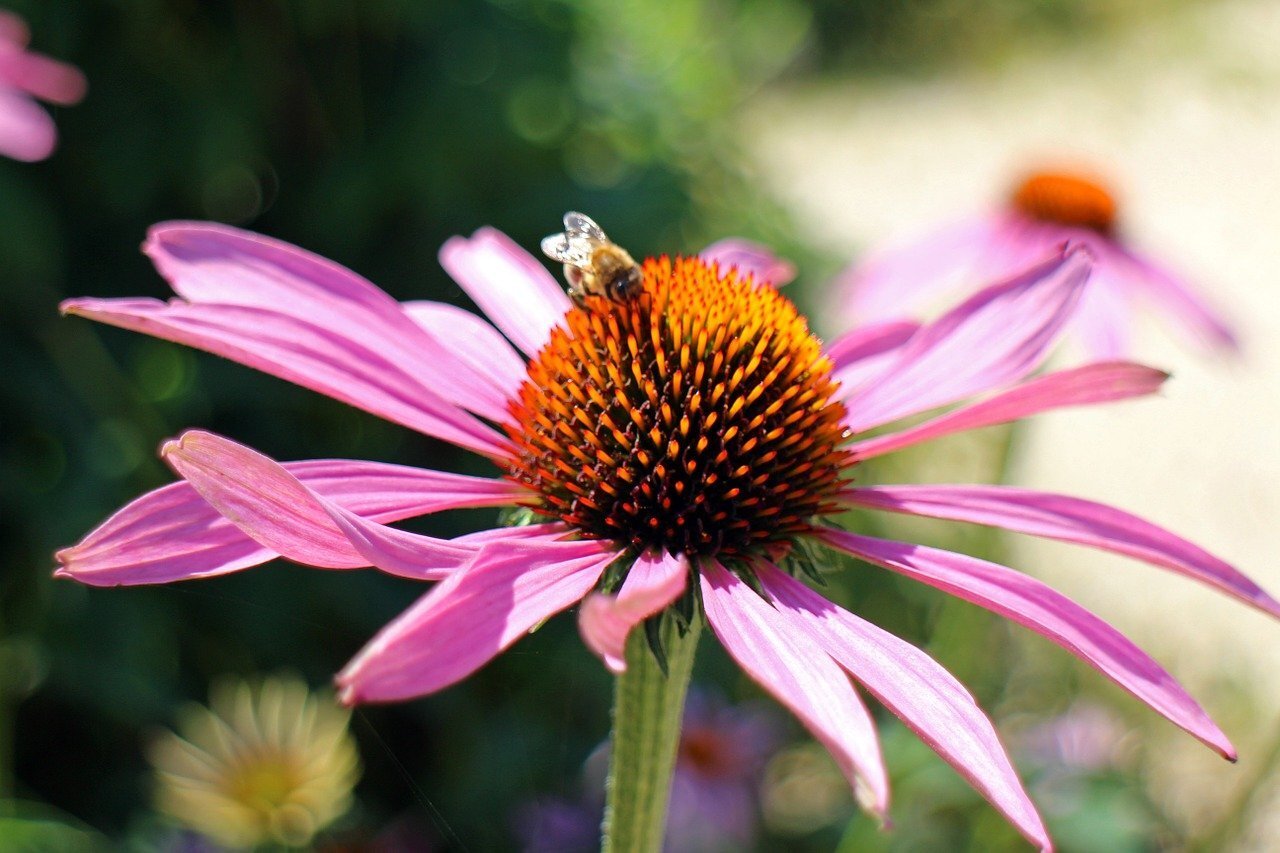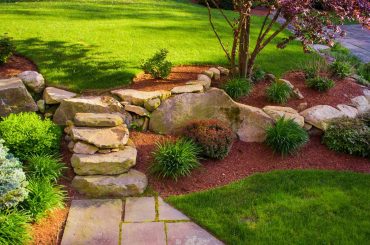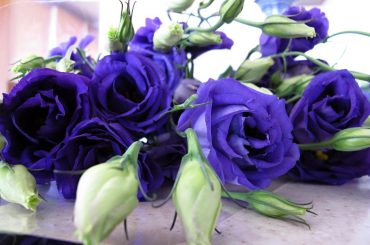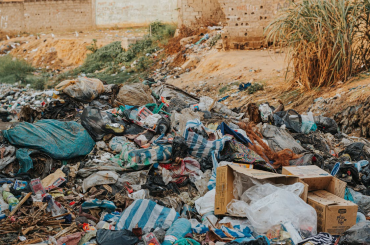Table of Contents
A garden without its favourite creatures seems to be a mismatch. Those tiny flying bees, butterflies and dragonflies, though they might seem to be a nag, we cannot take away the fact that they take the look of your garden a notch above. Also, studies have shown if the bees disappear, then the human race might become extinct.
Bees are strong pollinators. In fact, they are responsible for the pollination of 1/3rd of the food we eat. Unfortunately, bees in the UK are under threat. And so, we are certainly not in a position to lose them. So, as a gardener, you can contribute to the growth of plants that attract bees.
This write-up will take you through the best trees, herbs and flowers for bees.
15 Beautiful Flowers for Bees
1. Goldenrod
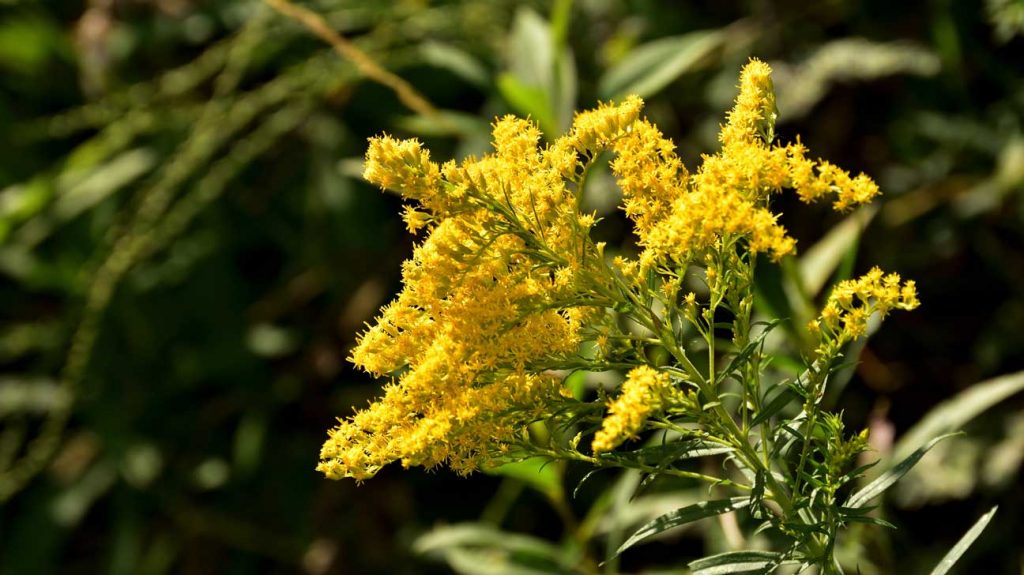
Flowering Season: August to September
Growth Requirements: Optimal sunlight, it grows well in acidic to neutral soil, and proper drainage is a must for magnificent blooms.
The strikingly yellow coloured Goldenrod not only look gorgeous, but they are an excellent bee-attractant. These are tall and slim plants with golden spike blossoming as their flowering part. These plants attract bees and other pollinators because of the nectar-filled in the flower. Moreover, the flowers also have seeds in them. Hence they attract a range of nectar-sipping bees, butterflies, wasps and moths.
2. Common Poppy
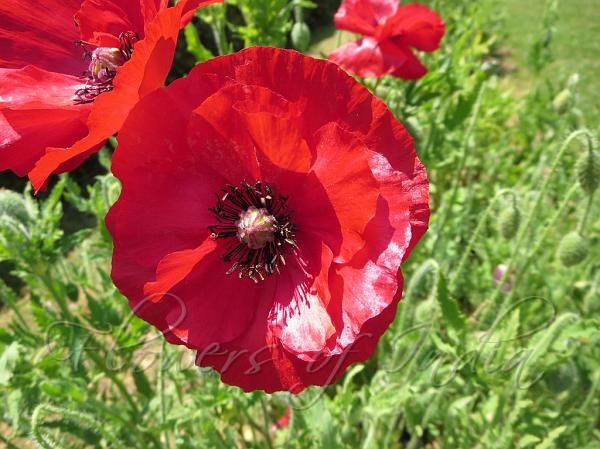
Flowering Season: Early summer to October
Growth Requirements: Poppy needs exposure to sunlight for a healthy bloom. The soil must be fertile and should be well-drained. Early spring is the right time to sow poppy.
Common Poppy looks beautiful not just to human eyes but even to bumble bees. Although poppy plants don’t have sweet nectar, they still attract bees. The long filament makes it easy for the bees to easily access the flower, and they are a good source of pollen. The exposed anthers make it easier for the bees to reach the pollen. In addition to being a source of pollen, Poppy leaves are used by Poppy Mason Bee to line their nest.
3. Bee Balm
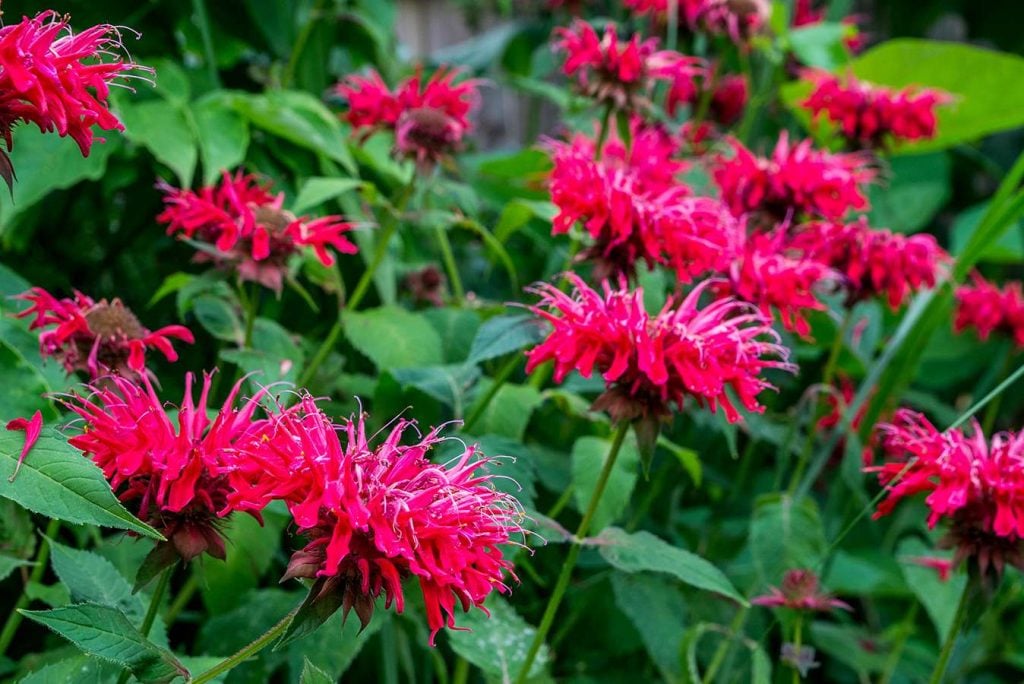
Flowering Season: July and August
Growth Requirements: Bee Balm requires full sunlight for growth. Acidic to neutral soil supports the growth of these plants.
These plants are no less than billboards encouraging bees to line up. Bee Balm has coloured flowers in the hues of red, white, Lavender, purple and pink. These plants attract hummingbirds, bees, predatory wasps, and hawk moths. Bee Balm has slender tubular flowers filled with nectar. For bees, it might be difficult to suck the nectar from the tube, so they puncture the petals to extract the nectar. This process is called nectar robbing.
4. Foxglove
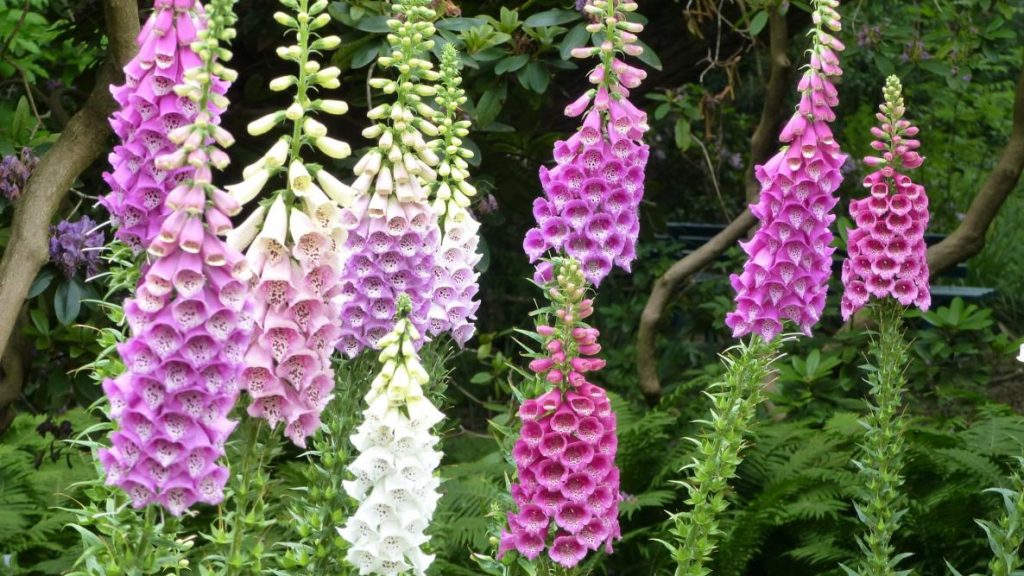
Flowering Season: June to September
Growth Requirements:Foxglove can easily bloom under full sun with some afternoon shade. Moist and well-drained soil promotes the growth of this plant.
The spiked-shaped flowers of Foxglove give it a distinctive look. It is native to the Mediterranean region but is now cultivated in different parts of the world, like the UK. The spiked-shaped flower of this plant is an excellent source of pollen and hence attracts bees. The dark-coloured flowers are strikingly marked spotted edges that attract the bees. This plant is also known by other popular names like Dead Man’s Bell, Goblin Gloves, and Witches’ Gloves.
5. Teasel
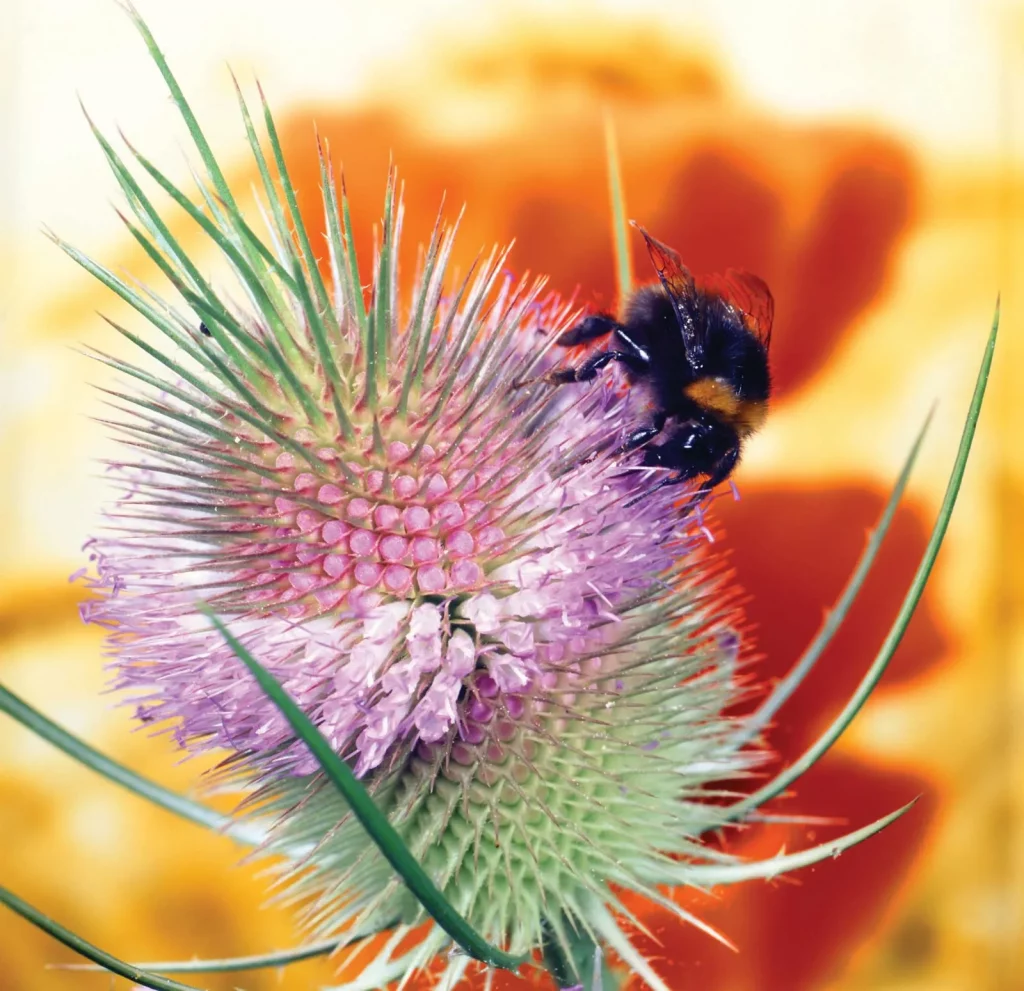
Flowering Season: June to August
Growth Requirements: It grows well in open and sunny areas. Most fertile soil promotes the growth of this plant. However, it can also thrive in dry and wet conditions.
Teasel is a tall and spiny short-lived perennial or biennial plant. The spiked-shaped flowers give it a unique look and attract bees and other pollinators. It is a great source of nectar and hence attracts pollinators like bees.
6. Mint
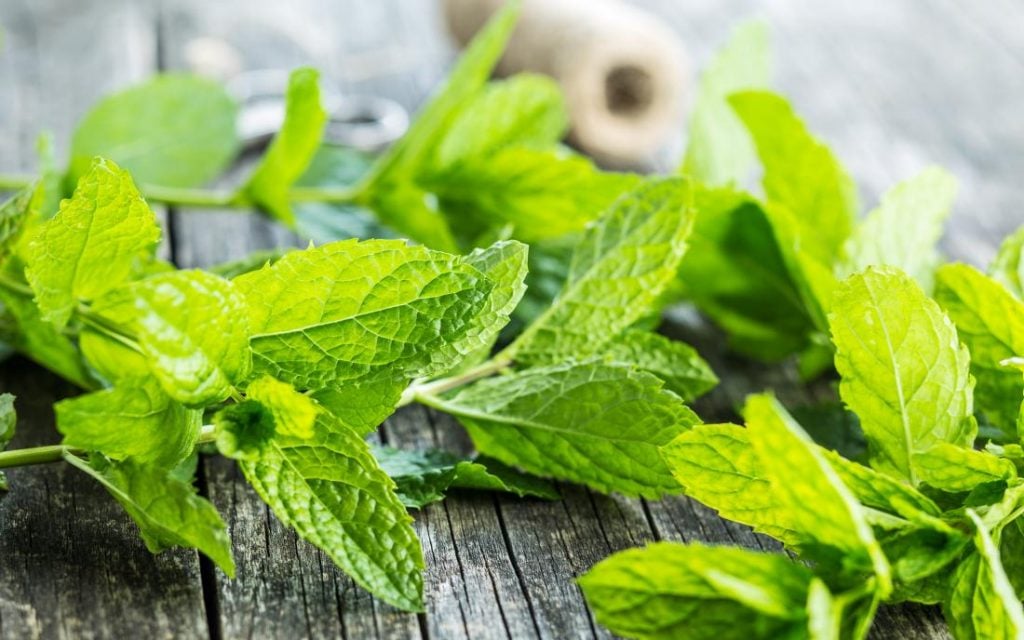
Flowering Season: Summer and early autumn.
Growth Requirements: Mint needs moist soil for growth. Exposure to sunlight and a regular sprinkling of water is important to ensure healthy growth.
Apart from flowers, certain herbs also appeal to bees and other pollinators. If you are also looking forward to attracting bees to your yard, then you can add mint to your list. Mint flowers attract bees. Its purple, pink or white spires are filled with nectar that lures bees. Mint is also a medicinal herb. So, you can dually benefit by adding this flavourful herb to your yard.
7. Chives
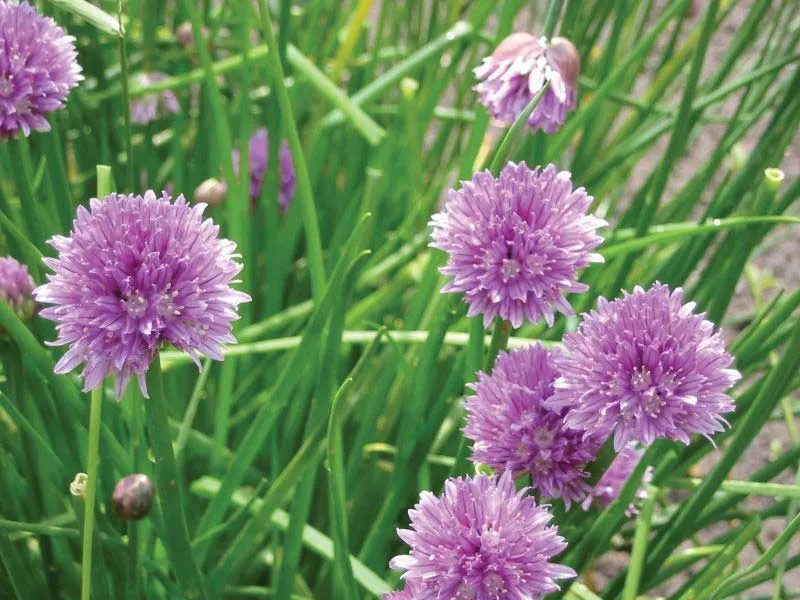
Flowering Season: Late Spring and early summer
Growth Requirements: Chives are easy to grow. It needs moist soil for growth. You can plant them in an area that receives sunlight (a little shade would promote the growth of the plant).
If you are looking for an easy-to-grow plant that also pulls bees and other pollinators to your yard, then you can consider adding Chives. These flowers have a unique taste, thus becoming a great source of nectar for the bees. One of the unique features of this plant is that it can easily grow in any season, thus making it a hot favourite of gardeners. Besides, Chivesalso find usage in flavouring soups, salads and other cuisines.
8. Salvia
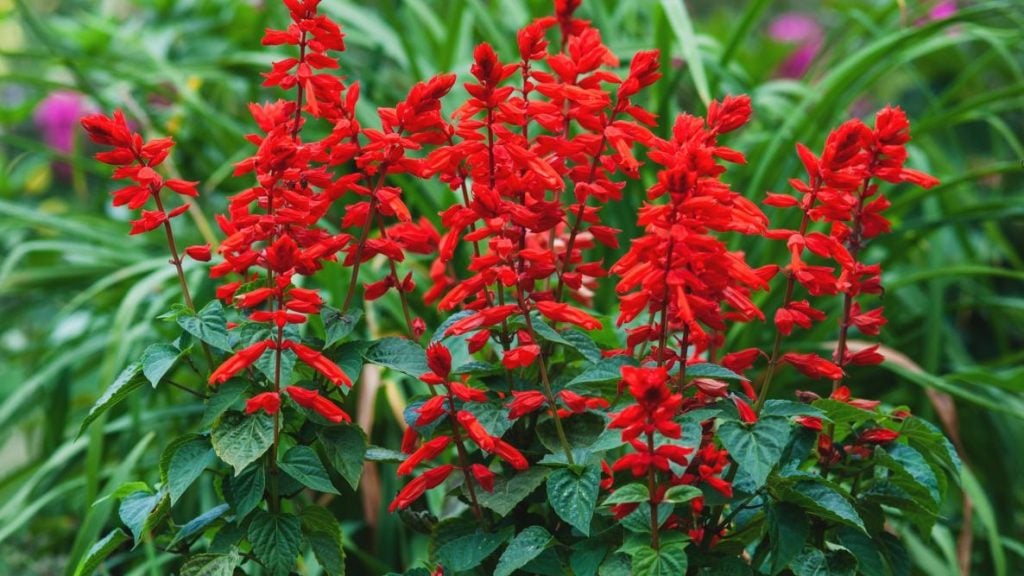
Flowering Season: Late Spring and early summer
Growth Requirements: They prefer sunny spots for growth. Well-drained soil promotes the growth of Salvia. You can start planting Salvia in early summer.
Are your someone who loves bees and butterflies to be a regular visitor to your garden? Then, you should consider adding Salvia. Its unique fragrance attracts bees. It has purple, blue and red coloured flowers filled with nectar. The tubular-shaped flowers of Salvia captivate bees, butterflies and other pollinators. Moreover, Salvia also holds medicinal significance and is easy to grow and requires minimal pruning, so you can consider adding it to your garden.
9. Thyme
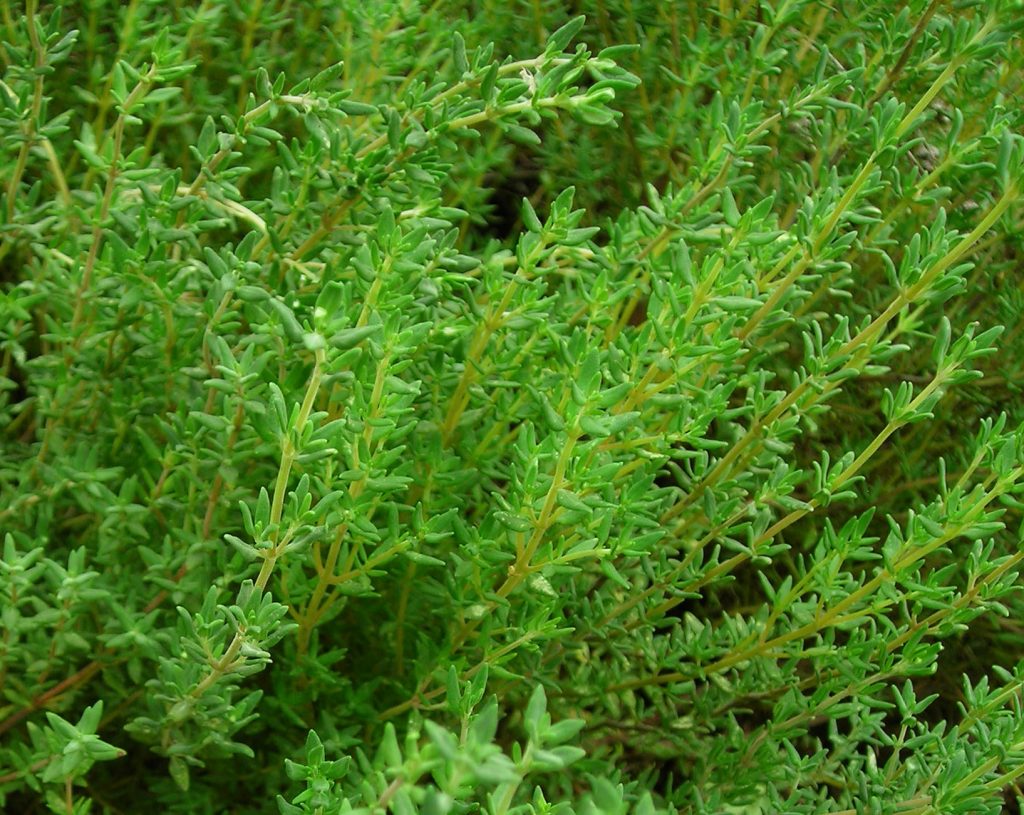
Flowering Season: Summer
Growth Requirements: Thyme grows in well-drained soil. Alkaline to neutral soil promotes the growth of this herb. Exposure to the sun is a must for healthy growth.
We know that Thyme is a popular herb used for cooking, but did you know that they also beckon bees and pollinators? Yes, bees love Thyme, and if you want your yard to be buzzing with bees and butterflies, adding Thyme to your yard can be a good way to start the process. Its unique smell instantly attracts bees. It is an aromatic herb. In addition, Thyme also holds medicinal significance for bees. It has terpenes that act as an antibiotic that hinders the growth of bacteria that can cause bee diseases. Thyme is easy to grow and is also pest-free, thus making it an apt herb to grow.
10. Wild Marjoram
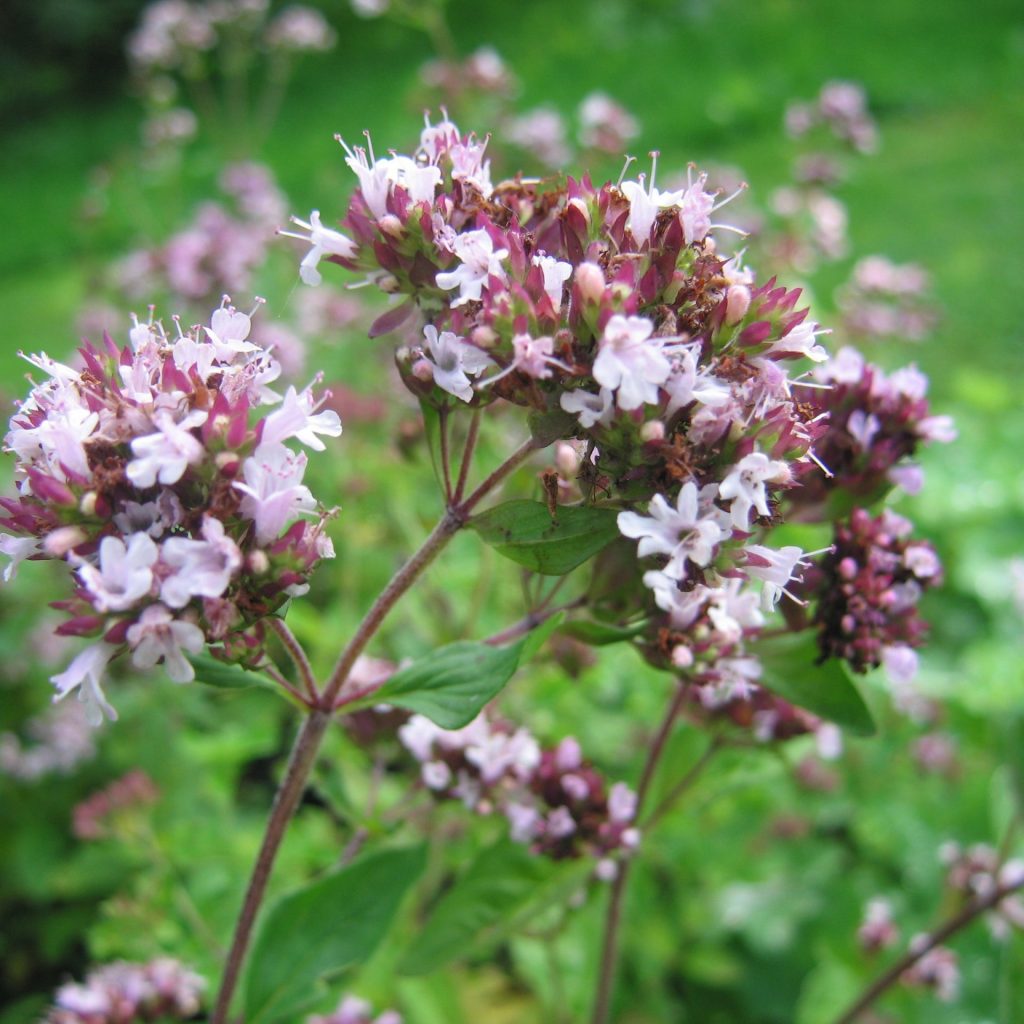
Flowering Season: Summer and early autumn.
Growth Requirements: Regular watering is a must for the growth of this plant. They need warm and sheltered pots for growth.
It is a perineal herb that belongs to the mint family. Studies have shown that it is one of the best flowers that attracts bees. The plant can grow up to a height of 2 ft. It has flowers in pink and purple shades. The flowers are loaded with nectar, which makes it a hit amongst the bees and other pollinators. Moreover, growing Marjoram is easy, and it can be easily propagated in pots or on the ground.
11. Lantana
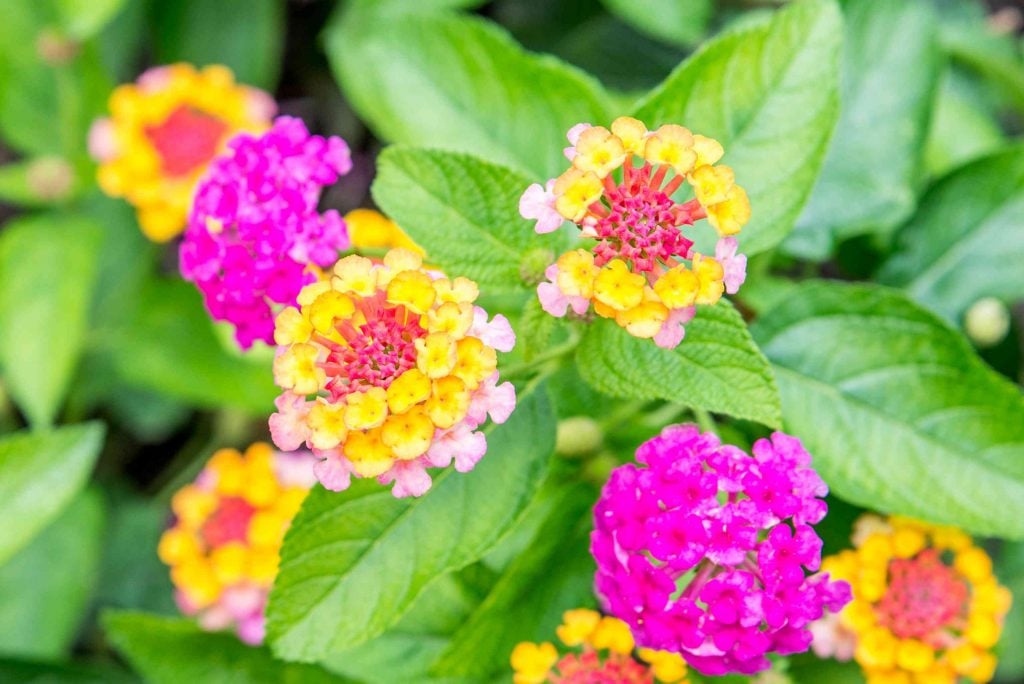
Flowering Season: Late spring through frost
Growth Requirements: Well-drained soil promotes the growth of Lantan. Acidic and neutral soil supports the growth of this plant. You can plant it during the spring season.
Lantana has beautiful flowers that grow in small clusters, and the hues of yellow and red give them a distinct look. The flowers are rich in pollen and nectar, which instantly attracts the bees and birds.
12. Coneflower

Flowering Season: Summer to early fall
Growth Requirements: They require full to partial sunlight for growth. Well-drained, clayey and loamy soil promotes healthy growth of Coneflower.
Looking for a perfect flower that will draw bees and birds to your yard? Consider adding Coneflower. Available in different hues, these flowers are loved by bees. This flower has a long bloom period; thus, bees will be regular visitors to your yard. These daisy-like flowers are also available in shades of purple, white, yellow, orange and pink colour.
13. Snapdragon
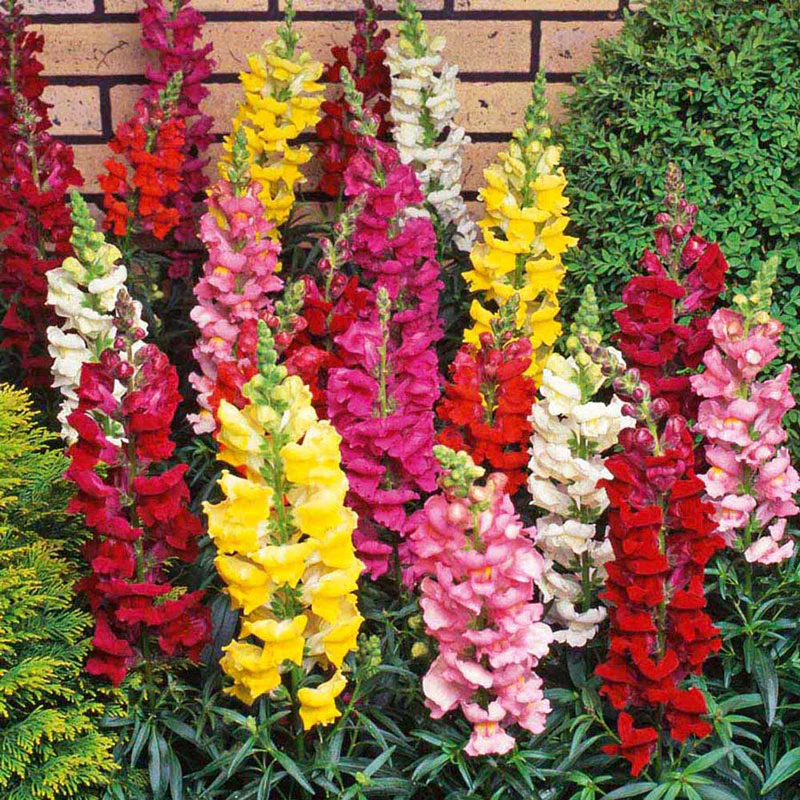
Flowering Season: Spring and fall
Growth Requirements: To ensure the healthy growth of this plant, it should be planted in well-drained soil, along with full to partial sunlight exposure.
As the winter starts, it becomes difficult for bees to collect nectar, but if you are planning to invite bees even during the cooler month, consider adding Snapdragon. These are available in yellow and blue shades. The unique colour of the plant attracts the bees. Moreover, the flowers are loaded with nectar, and bees easily access it. Provide food for bees in the cooler months, too, with sweet-scented snapdragons.
14. Sunflowers
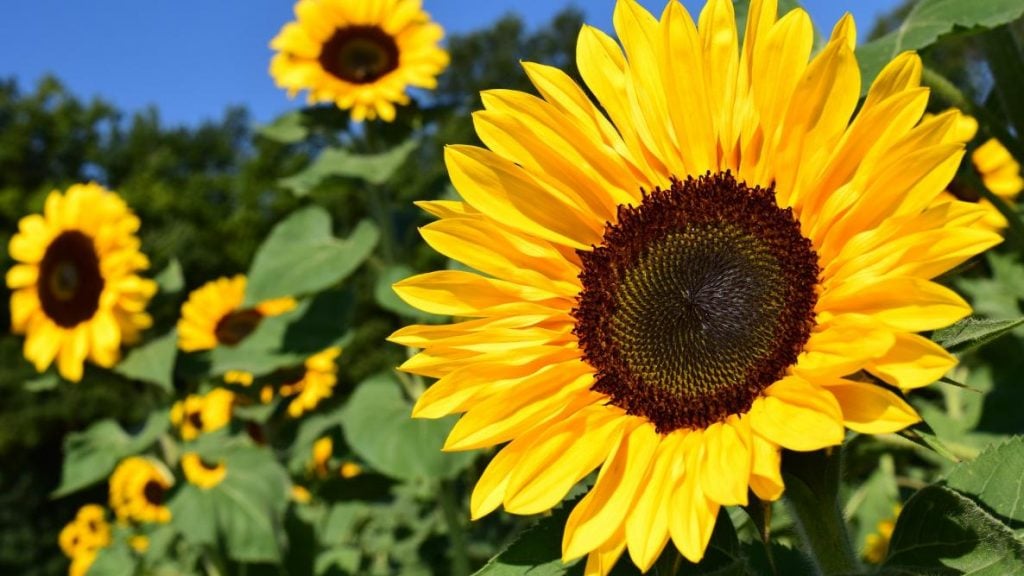
Flowering Season: Summer
Growth Requirements: Well-drained, slightly acidic to alkaline soil promotes the growth of Sunflowers.
One of the most beautiful additions that you can make during the summer season to your yard is adding Sunflowers. These flowers have a central disc which is a source of pollen and nectar. Thus, it easily captivates bees and birds.
15. Lavender
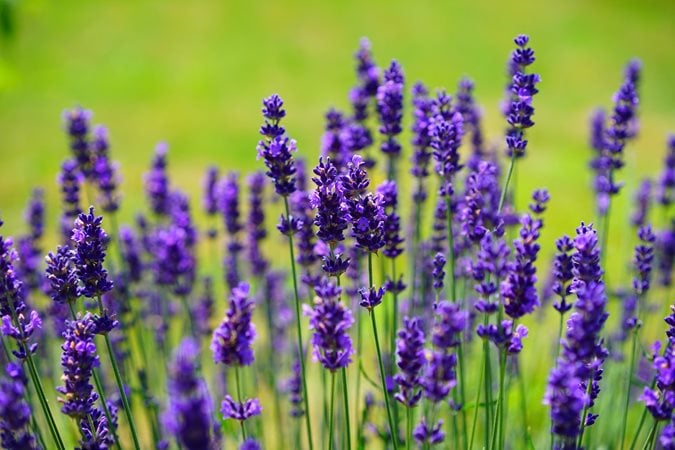
Flowering Season: Summer
Growth Requirements: Well-drained, neutral soil helps in the growth of Lavender.
When it comes to honeybees, then Lavender is the most popular choice for gardeners who love to have bees and butterflies in their gardens. The plant thrives well in heat, but humidity doesn’t suit the growth of the plants.
To Wrap It All Up
This was all about the top 15 herbs and flowers that magnetically attract bees and other pollinators. Growing these plants not only enchants bees and birds, but at the same time, some of these plants, like Mint, Chive, and Lavender, hold medicinal significance. These 15 flowers for bees, along with other plants, provide nectar and pollen to them, thus aiding the process of pollination. By adding these, you can create a perfect ecosystem of growth for bees.
However, to enjoy a healthy bloom that lures bees, make sure that you provide apt growth conditions. These flowers also enhance the aesthetics of your yard. Additionally, these flowers also enhance the aesthetics of your yard. The beautiful blooms, fragrance and greenery add charm to your garden. Whether you have a balcony garden or a big yard, the right kind of plants helps create a beautiful alfresco that everyone will love.
The beautiful blooms, fragrance and greenery add charm to your garden. Whether you have a balcony garden or a big yard, the right kind of plants helps create a beautiful alfresco that everyone will love.
Frequently Asked Questions (FAQs)
How do I Get to Know If the Plant Will Attract Bees?
Apart from the 15 flowers and herbs that we have discussed above, there are several other plans that attract bees. One of the easiest ways to figure this out is to choose a plant which Bears colourful flowers and has fragrance. It instantly attracts the pollinators like bees, moths, birds, and butterflies.
Can we Create a Bee-Friendly Space in a Smaller Area?
Space constraint is a common problem faced by many people. However, if you love to have a be a friendly garden, then you can convert your balcony garden or small area by planting bee-friendly plants like Snapdragon, Lavender, Chive, mint and others.
What are Some Other Plants That Attract bees?
You can add Fennel, Sage, Wisteria, Milkweed, and Black-eyed Susan to attract bees. However, you should know that only healthy blooms will be able to attract pollinators. So, you should ensure regular watering, fertilization and maintenance of the plant.

